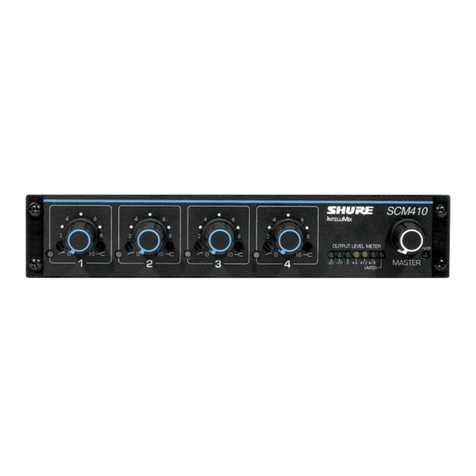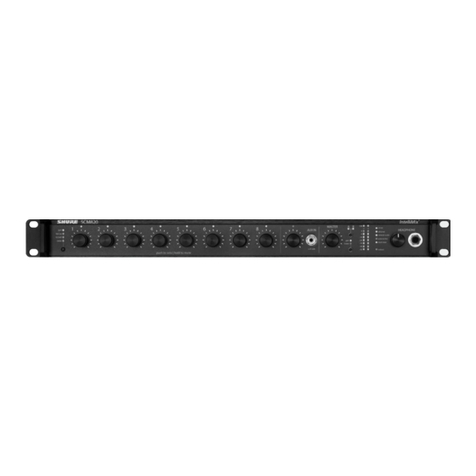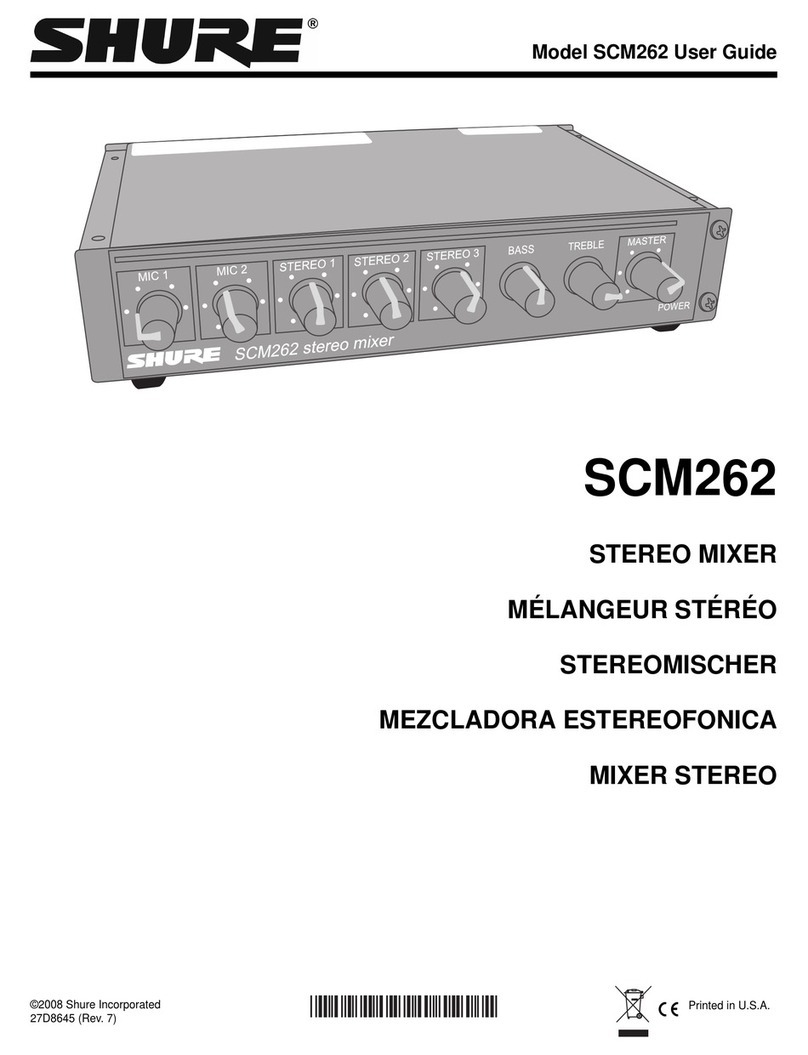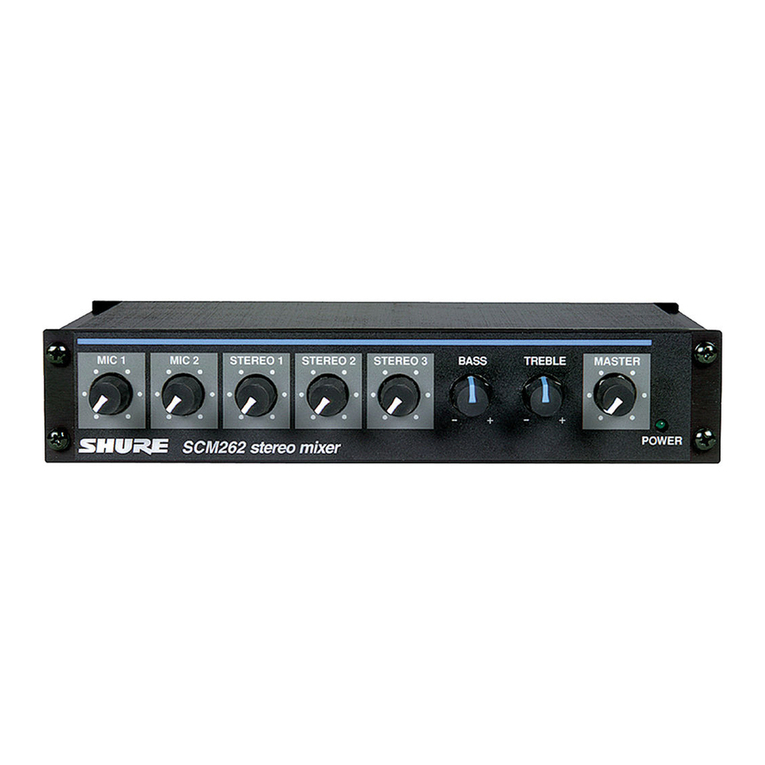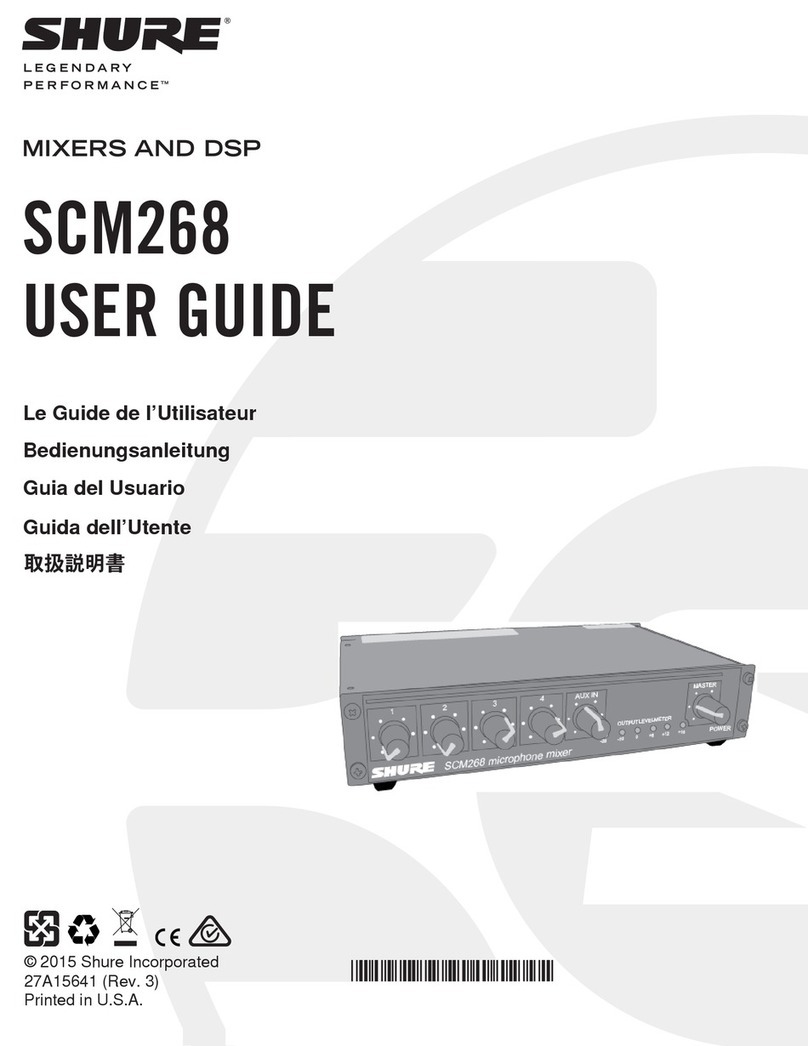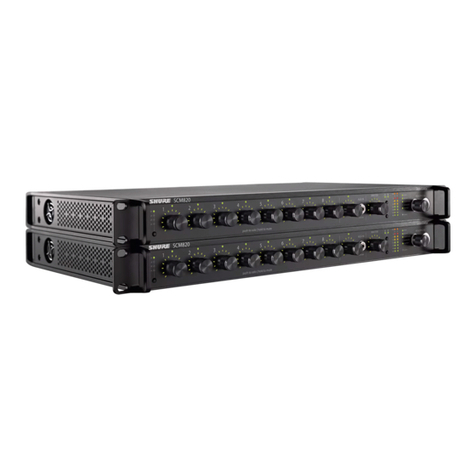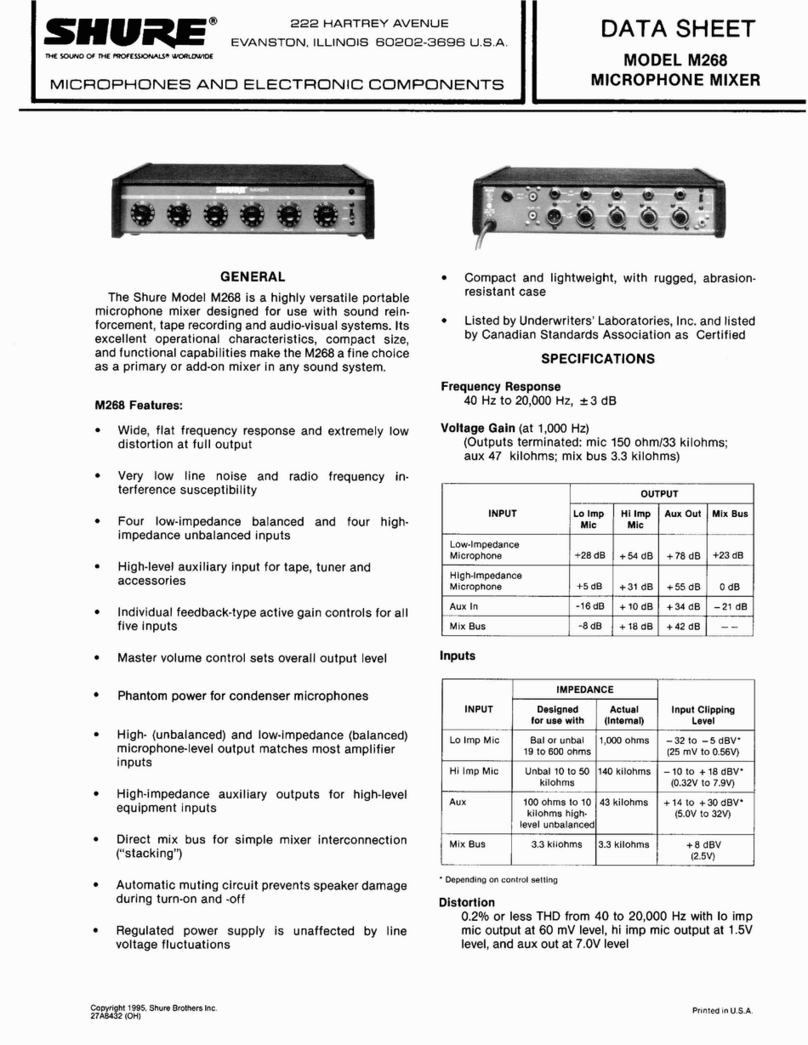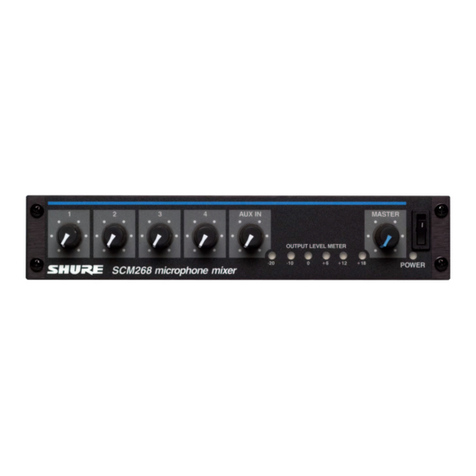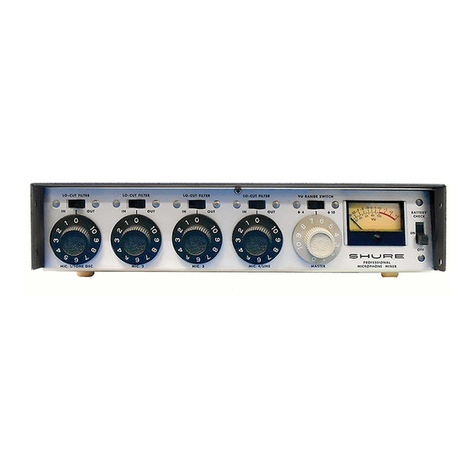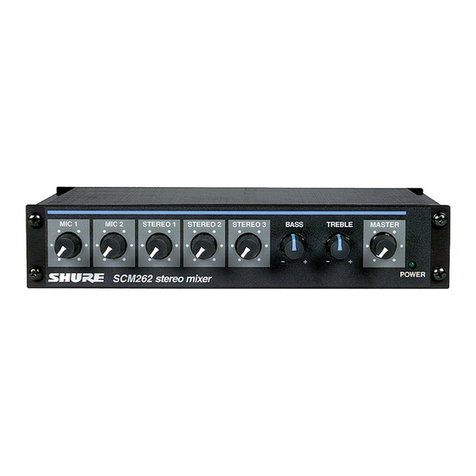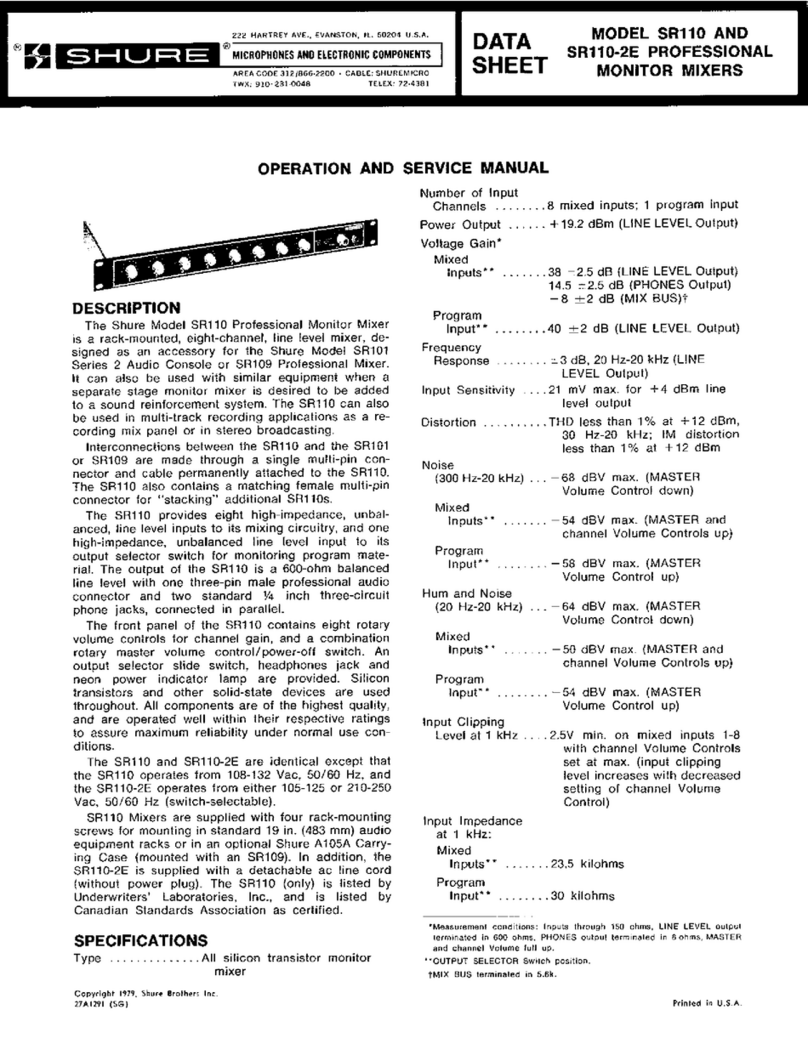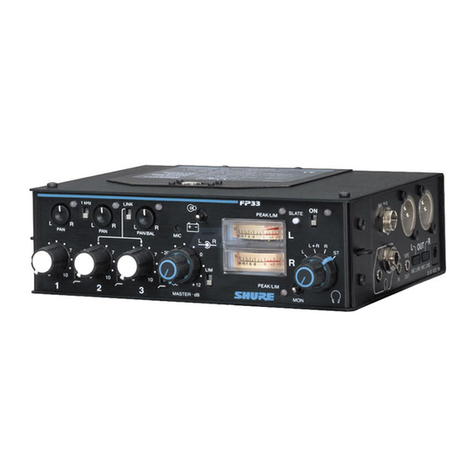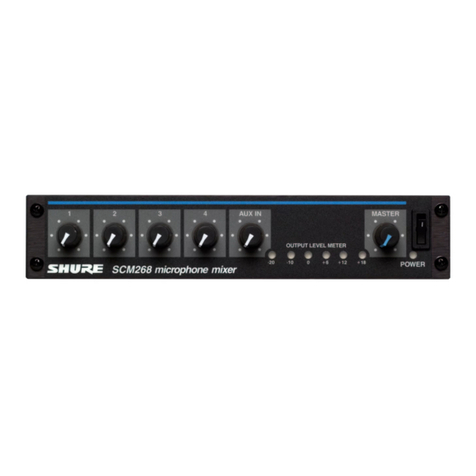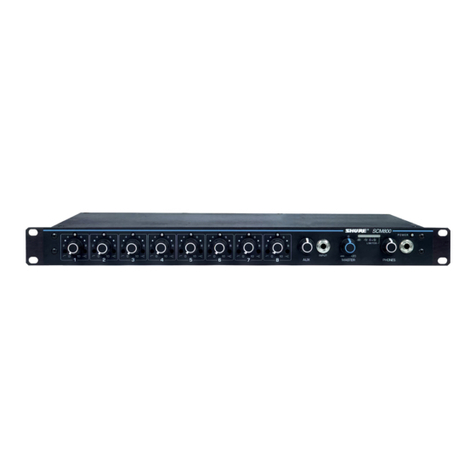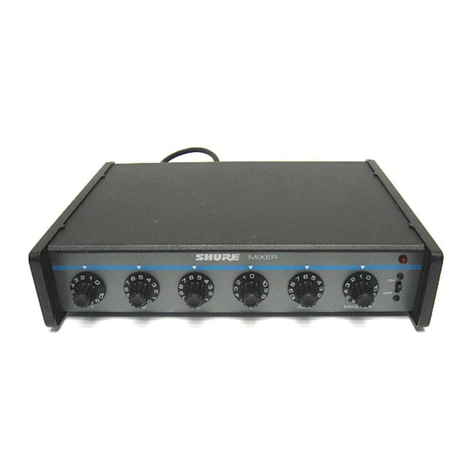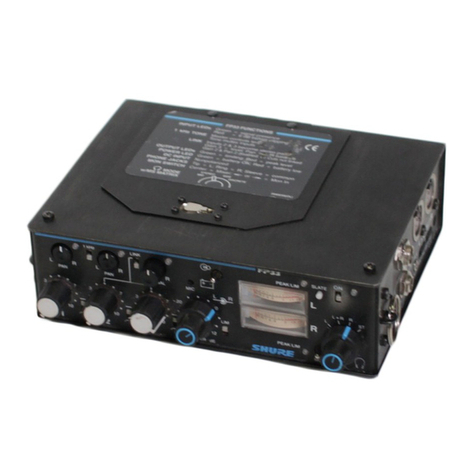
2
English –
DIP SWITCHES
DIP FUNCTION POSITION
SWITCH UP (default) DOWN
1LEFT OUTPUT MIC/LINE Line Mic
2RIGHT OUTPUT MIC/LINE Line Mic
3MIC 1 DUCKING Off On
4MIC 2 DUCKING Off On
5DUCKING LEVEL –1–20 dB
6STEREO 3 JUKEBOX MUTE Off On
712 V PHANTOM Off On
LEFT/RIGHT OUTPUT MIC/LINE: DIP switches 1 and 2
adjust the left and right outputs for line- or mic-level operation.
MIC 1/MIC 2 Ducking: When ducking is on, the SCM262
will automatically lower the gain of all STEREO inputs when
someone is speaking into one of the microphones.
DUCKING LEVEL: Adjusts the amount of STEREO
channel gain reduction when ducking is activated.
STEREO 3 JUKEBOX MUTE: This DIP switch turns the
Juke Box Mute feature on or off. When on, any source
connected to STEREO 3 will mute STEREO 1 and 2 inputs.
PHANTOM POWER: When in the down position, this
switch activates a 12 V phantom power source for condenser
microphones. Phantom power does not affect the operation of
balanced, dynamic microphones, so one can be connected to
the SCM262 in combination with a condenser microphone.
APPLICATIONS
General Application
This is a general setup for most situations which require
the combined use of professional microphones and consumer
stereo equipment. Using this general setup, there are several
other options available for further adjusting the SCM262 for
your sound system. See the diagram on the facing page.
1. Turn all gain controls counterclockwise.
2. Connect L/R STEREO INPUTS of the SCM262 to the L/R
stereo outputs of the desired stereo audio equiment (CD
players, VCRs, televisions, juke boxes, etc.).
3. Connect microphone(s) to the MIC INPUTS on the
SCM262.
4. For microphones which require phantom power, such as
condenser microphones, place DIP switch 7 in the down
position (phantom power on).
5. Connect the L/R outputs of the SCM262 to the L/R inputs
of the amplifier.
NOTE: If you are using a consumer stereo amplifier,
use the AUX OUTs. If you are using a professional
audio power amplifier, use the LINE OUTs. The
MIC/LINE and AUX OUTPUTs can be used
simultaneously to feed two separate amplifiers.
6. Apply power to the mixer by connecting the supplied
power cable between the power connector on the mixer
and the appropriate AC power supply. The green
POWER LED will illuminate to indicate that the mixer is
powered on.
NOTE: The SCM262 has no power switch. It is
designed to be plugged into a power strip which
supports the whole sound system. A typical power strip
will have a power switch, so that when the power strip is
powered on, the SCM262 is powered on.
Paging with Ducking Application
With Ducking on, the SCM262 will automatically sense
when someone is talking into one of the microphones and
lower the volume of the music so the talker can be heard more
clearly. Once the talker is finished, the music resumes.
NOTE: Use a microphone with an ON/OFF or
pushbutton switch for the Paging with Ducking
Application. A microphone without a switch will
false-trigger, causing unwanted interruptions in the
program material.
1. Connect the SCM262 to the sound system as described
in General Application.
2. Set DIP switch 3 or 4 to the down position to activate
ducking for microphone channel 1 or 2, respectively.
3. Set DIP switch 5 position. The Down position sets the
ducking so that the program sound is lowered 20 dB when
someone uses a microphone. The Up position sets the
ducking so that the program sound is muted when
someone uses a microphone.
Jukebox Mute Application
In this application, designed primarily for Jukeboxes, any
sound source connected to the STEREO 3 channels will
automatically mute any sound coming over the STEREO 1 and
2 channels. This way, a CD player can be playing music, and
then when someone plays a song on the Jukebox, the
SCM262 will automatically mute the CD player channels and
switch to the Jukebox. STEREO 1 and 2 channels will remain
muted for about 30 seconds after program material is finished,
to allow the jukebox time to move on to the next song.
1. Connect the SCM262 to the sound system as described
in General Application.
2. Connect the L/R audio outputs of the jukebox to the L/R
inputs of STEREO 3.
NOTE: This feature is designed especially for use with
jukeboxes, but will work for any equipment connected
to STEREO 3.
3. Set DIP Switch 6 to the down position (Jukebox Mute on).
NOTE: If the ducking application is used in conjunction
with the Jukebox Mute application, then activated
microphones will mute or duck the STEREO 3 input.
DOWN
UP
*DEFAULT SETTINGS SHOWN.

